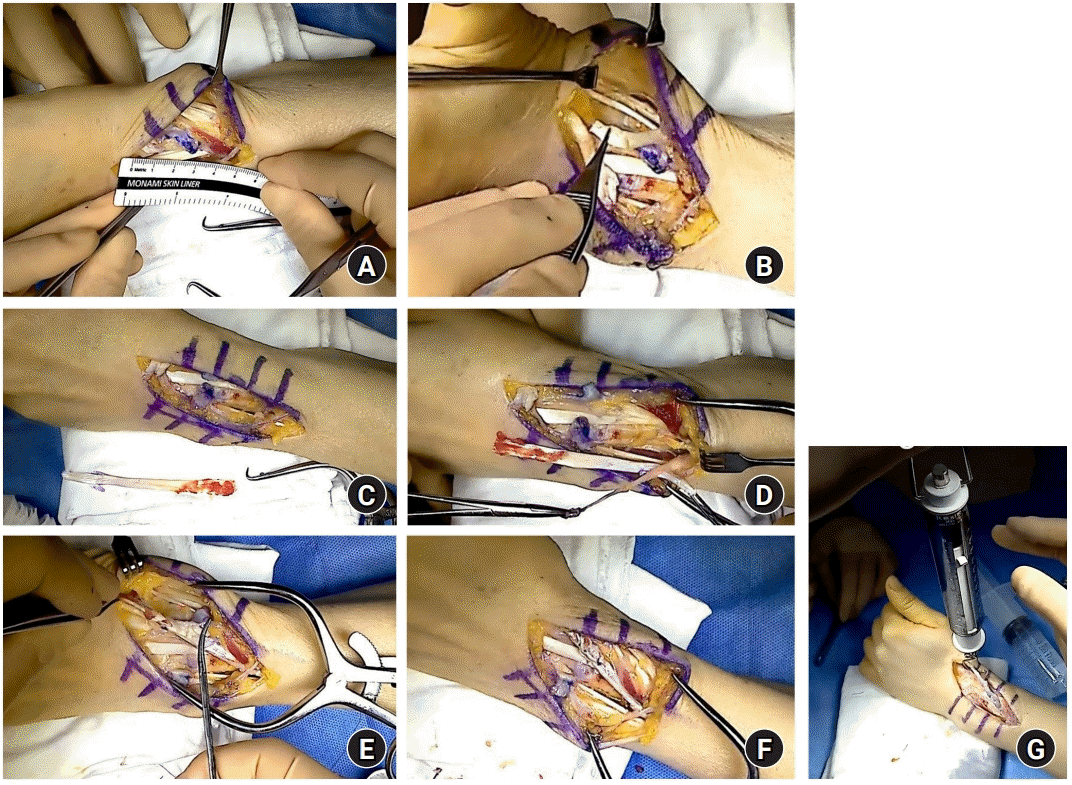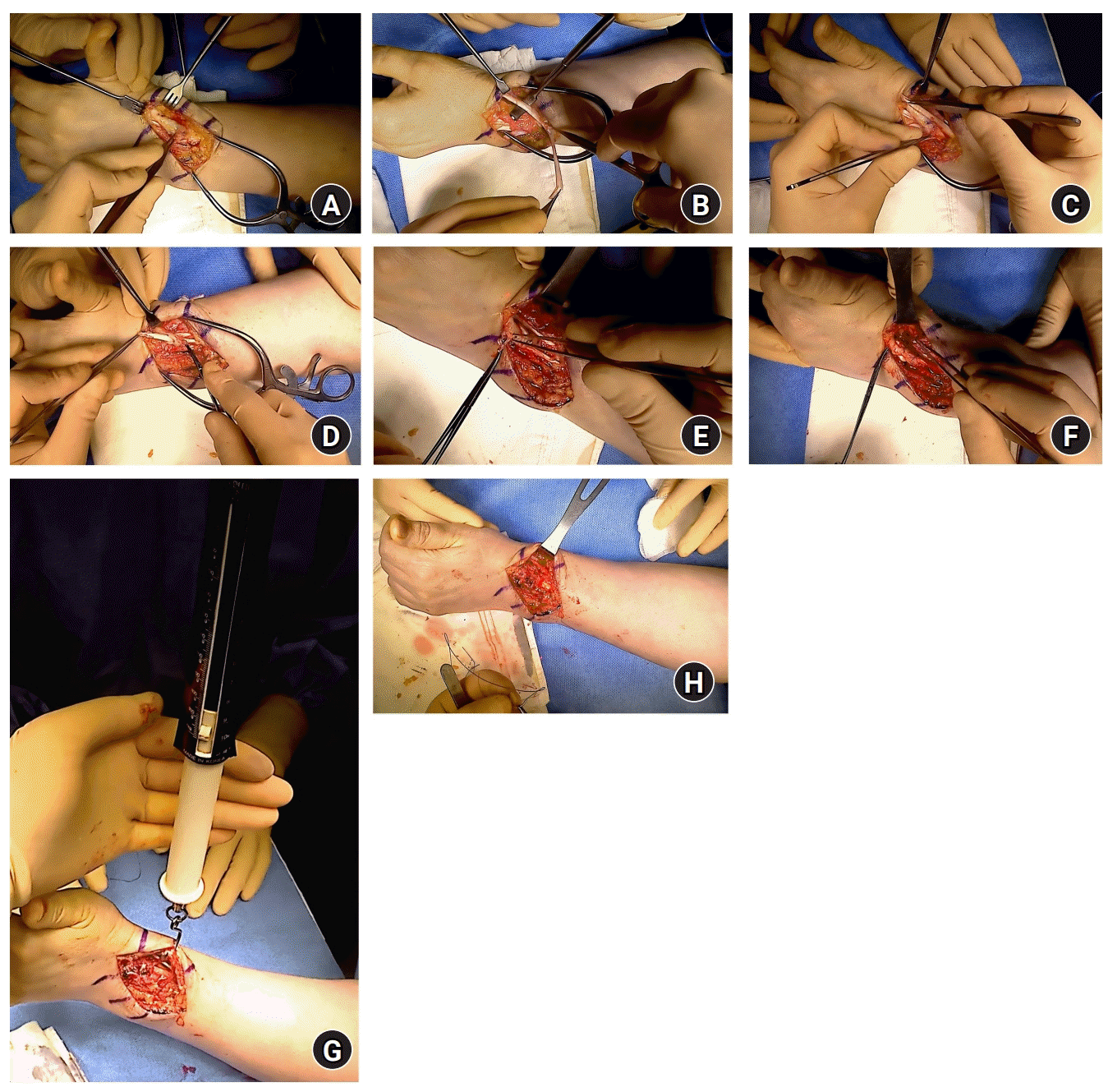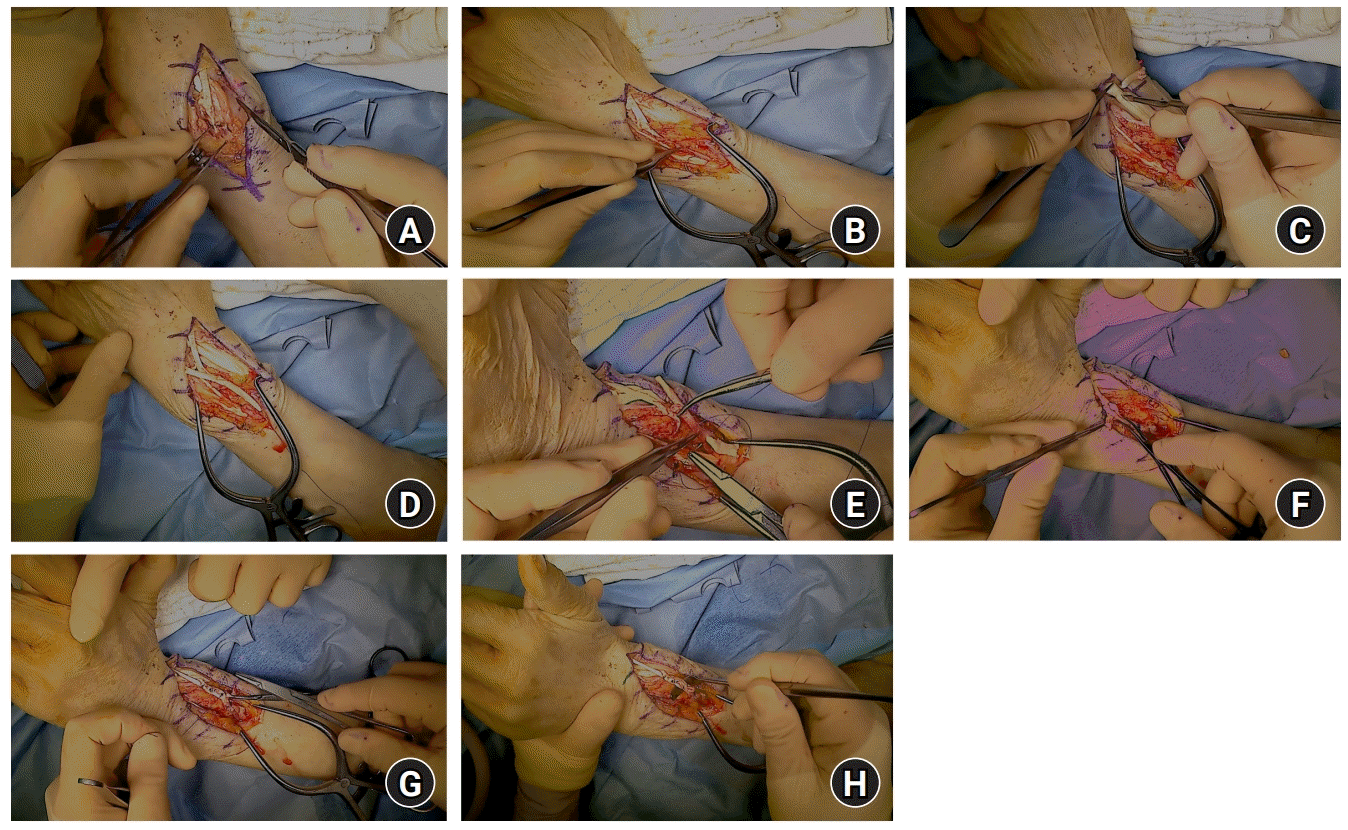1. Rivlin M, Eberlin KR, Kachooei AR, et al. Side-to-side versus Pulvertaft extensor tenorrhaphy: a biomechanical study. J Hand Surg Am. 2016; 41:e393–7.
2. Jeon SH, Chung MS, Baek GH, Lee YH, Kim SH, Gong HS. Comparison of loop-tendon versus end-weave methods for tendon transfer or grafting in rabbits. J Hand Surg Am. 2009; 34:1074–9.
3. Kulikov YI, Dodd S, Gheduzzi S, Miles AW, Giddins GE. An in vitro biomechanical study comparing the spiral linking technique against the pulvertaft weave for tendon repair. J Hand Surg Eur Vol. 2007; 32:377–81.
4. Tanaka T, Zhao C, Ettema AM, Zobitz ME, An KN, Amadio PC. Tensile strength of a new suture for fixation of tendon grafts when using a weave technique. J Hand Surg Am. 2006; 31:982–6.
5. Fuchs SP, Walbeehm ET, Hovius SE. Biomechanical evaluation of the Pulvertaft versus the ‘wrap around’ tendon suture technique. J Hand Surg Eur Vol. 2011; 36:461–6.
6. Pulvertaft RG. Tendon grafts for flexor tendon injuries in the fingers and thumb; a study of technique and results. J Bone Joint Surg Br. 1956; 38-B:175–94.
7. Bidic SM, Varshney A, Ruff MD, Orenstein HH. Biomechanical comparison of lasso, Pulvertaft weave, and side-by-side tendon repairs. Plast Reconstr Surg. 2009; 124:567–71.
8. Vincken NL, Lauwers TM, van der Hulst RR. Biomechanical and dimensional measurements of the Pulvertaft weave versus the cow-hitch technique. Hand (N Y). 2017; 12:78–84.
9. Strandenes E, Ellison P, Mølster A, Gjerdet NR, Moldestad IO, Høl PJ. Strength of Pulvertaft modifications: tensile testing of porcine flexor tendons. J Hand Surg Eur Vol. 2019; 44:795–9.
10. Pauchard N, Pedeutour B, Dautel G. [Graft reconstruction of flexor tendons]. Chir Main. 2014; 33 Suppl:S58–71. In French.
11. Hashimoto T, Thoreson AR, An KN, Amadio PC, Zhao C. Comparison of step-cut and Pulvertaft attachment for flexor tendon graft: a biomechanics evaluation in an in vitro canine model. J Hand Surg Eur Vol. 2012; 37:848–54.
12. Gabuzda GM, Lovallo JL, Nowak MD. Tensile strength of the end-weave flexor tendon repair: an in vitro biomechanical study. J Hand Surg Br. 1994; 19:397–400.
13. De Smet L, Schollen W, Degreef I. In vitro biomechanical study to compare the double-loop technique with the Pulvertaft weave for tendon anastomosis. Scand J Plast Reconstr Surg Hand Surg. 2008; 42:305–7.
14. Kannan S, Ghosh AI, Dias JJ, Singh HP. Comparative biomechanical characteristics of modified side-to-side repair and modified Pulvertaft weaving repair - in vitro study. J Hand Surg Asian Pac Vol. 2019; 24:76–82.
15. Yang C, Zhao C, Amadio PC, Tanaka T, Zhao KD, An KN. Total and intrasynovial work of flexion of human cadaver flexor digitorum profundus tendons after modified Kessler and MGH repair techniques. J Hand Surg Am. 2005; 30:466–70.
16. Brown SH, Hentzen ER, Kwan A, Ward SR, Fridén J, Lieber RL. Mechanical strength of the side-to-side versus Pulvertaft weave tendon repair. J Hand Surg Am. 2010; 35:540–5.
17. Zhao C, Amadio PC, Momose T, Couvreur P, Zobitz ME, An KN. The effect of suture technique on adhesion formation after flexor tendon repair for partial lacerations in a canine model. J Trauma. 2001; 51:917–21.
18. Wu J, Thoreson AR, Reisdorf RL, et al. Biomechanical evaluation of flexor tendon graft with different repair techniques and graft surface modification. J Orthop Res. 2015; 33:731–7.
19. Wilbur D, Hammert WC. Principles of tendon transfer. Hand Clin. 2016; 32:283–9.
20. Aoki M, Manske PR, Pruitt DL, Kubota H, Larson BJ. Work of flexion after flexor tendon repair according to the placement of sutures. Clin Orthop Relat Res. 1995; (320):205–10.
21. Momose T, Amadio PC, Zhao C, Zobitz ME, An KN. The effect of knot location, suture material, and suture size on the gliding resistance of flexor tendons. J Biomed Mater Res. 2000; 53:806–11.
22. Amadio PC, Hunter JM, Jaeger SH, Wehbe MA, Schneider LH. The effect of vincular injury on the results of flexor tendon surgery in zone 2. J Hand Surg Am. 1985; 10:626–32.
23. Savage R. In vitro studies of a new method of flexor tendon repair. J Hand Surg Br. 1985; 10:135–41.
24. Tonkin M, Hagberg L, Lister G, Kutz J. Post-operative management of flexor tendon grafting. J Hand Surg Br. 1988; 13:277–81.
25. Vucekovich K, Gallardo G, Fiala K. Rehabilitation after flexor tendon repair, reconstruction, and tenolysis. Hand Clin. 2005; 21:257–65.
26. Khan K, Riaz M, Murison MS, Brennen MD. Early active mobilization after second stage flexor tendon grafts. J Hand Surg Br. 1997; 22:372–4.








 PDF
PDF Citation
Citation Print
Print



 XML Download
XML Download